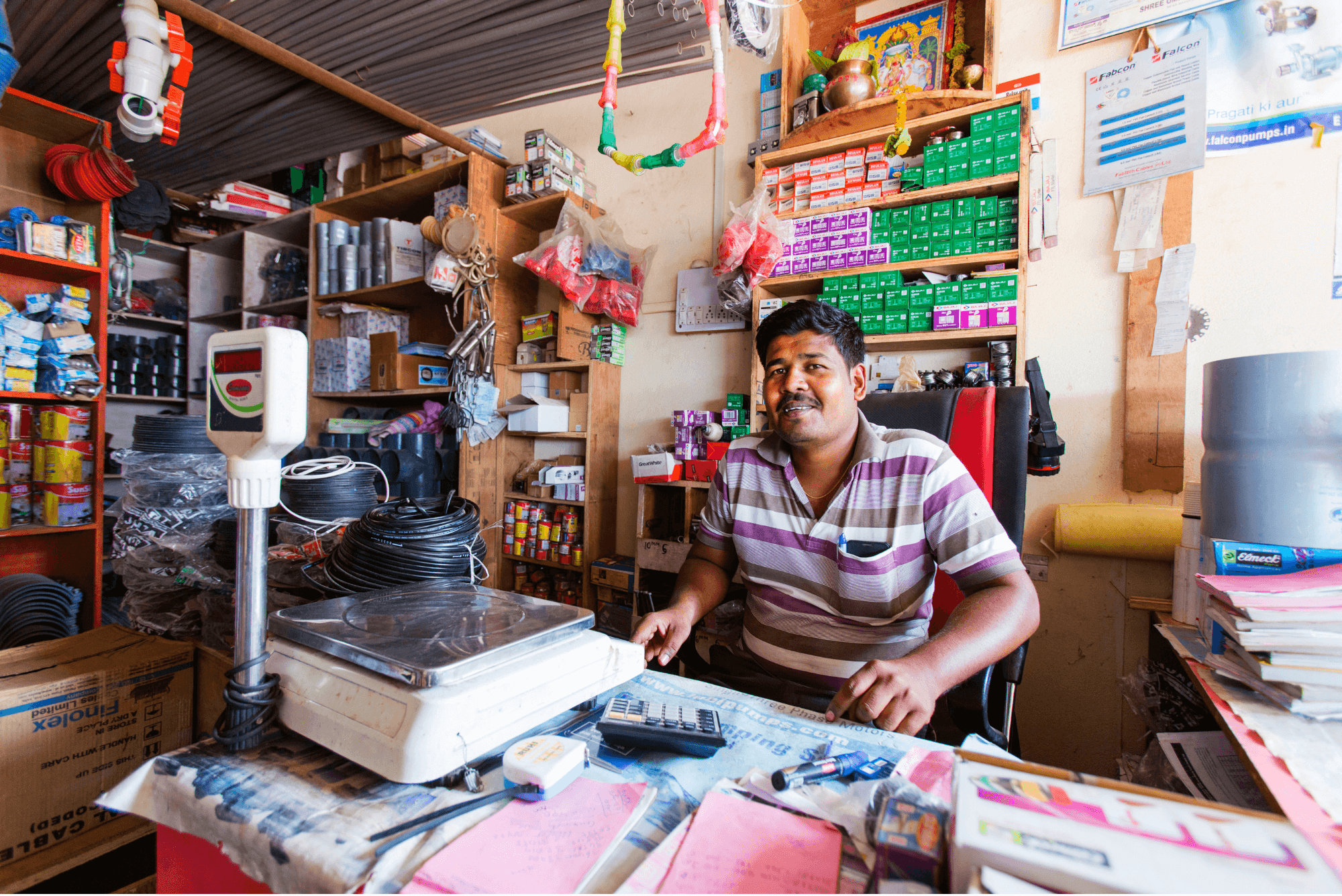
In business, resilience is often celebrated - the ability to withstand shocks and recover. But there’s a rarer, more potent quality: 'antifragility' - a concept popularized by Nassim Nicholas Taleb, describing the capacity to benefit from volatility.
This is a trait we observe in India’s 247 million Entrepreneurial Households, the ‘missing middle’ of India’s economy - households that primarily reside in rural and semi-urban regions and remain underserved by formal systems. These households are not shielded from disruption - they face fragile incomes, volatile markets, and unpredictable shocks. Yet their very structure enables them not only to endure but also to adapt and often emerge stronger. They do not simply withstand volatility; they organize and reorganize around it, finding ways to grow through challenges.
Weathering Complexity
The strength of Entrepreneurial Households lies in their household structure. They function like diversified enterprises rather than a collection of individuals. With multiple earners and multiple income streams, they are less exposed to single points of failure.
The Reimagining Local Economies Report, our survey of nearly 8,000 Entrepreneurial Households revealed that 86% have multiple sources of income, and 61% have multiple earning members. This is not mere diversification -it is effectively a form of risk management shaped by necessity, giving households a clear structural edge when shocks arrive.
Community ties and mutual support also play a central role. Entrepreneurial Households maintain strong local networks - functioning as informal insurance systems. Chit funds are a vivid example: members contribute monthly to a common pool, which can be accessed early at a higher cost or later for greater returns. This flexibility allows families to raise cash instantly when opportunities arise or to build wealth slowly in stable times.
In these ways, volatility becomes a resource to be managed and even leveraged - a grassroots example of antifragility in action.
Harnessing Opportunity
What makes Entrepreneurial Households antifragile is not only their defense against volatility but their instinct to capture opportunities.
Survey data reflects this duality: 84% expect financial improvement in the next two years, and two-thirds plan multiple large investments. While the stacking of incomes gives Entrepreneurial Households stability, it also fuels their ambition. For example, 74% are willing to pay premium rates for better schooling, seeing it as a clear path to progress.
Technology adoption reinforces this. Digital tools are increasingly woven into their economic lives. For example, 81% of households report increased UPI usage. When innovations like this are designed with relevance and fit, Entrepreneurial Households absorb them at scale.
Adaptation in Crisis
The COVID-19 pandemic revealed this adaptability vividly.
When Rupali Powanikar, a tailor in Pune, lost her school-uniform orders overnight, she pivoted to masks using leftover fabric. Within days, she was selling on the streets; within weeks, she was fulfilling bulk hospital orders and running online workshops for other women. A disruption became an engine for reinvention1.
In Mizoram, 400 tailors coordinated entirely over WhatsApp to produce protective equipment for frontline workers. What began as survival quickly scaled into innovation and supply chains. These were not seamless transformations - they were born of strain and urgency - but they show the remarkable capacity of Entrepreneurial Households to reorganize under pressure and, in doing so, expand what is possible2.
This is the essence of antifragility: not just absorbing a blow, but growing stronger through it.
The Antifragile Advantage
Clearly, Entrepreneurial Households combine two traits often seen as contradictory: financial discipline and growth orientation. They preserve savings and community bonds, yet they also channel capital into education, technology, and business expansion. This allows them to safeguard the downside while keeping the upside open.
And because this model is replicated across 247 million households, antifragility operates at a systemic level. India’s economy isn’t just powered by corporations or governments; it is animated by millions of decentralized, entrepreneurial units constantly adjusting to shocks and opportunities. Households are nodes of experimentation, adaptation, and value creation.
This household-level entrepreneurship results in an economy that is more nimble and decentralized than many realize. In a rapidly changing world - whether shaped by pandemics, climate disruptions, or technological shifts - this decentralization is a strategic advantage. India’s Entrepreneurial Households meet these challenges with adaptability, redundancy, and grassroots innovation. In a word, they are antifragile.



